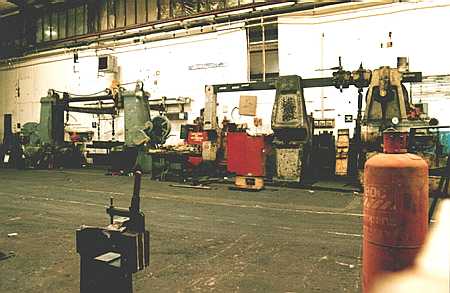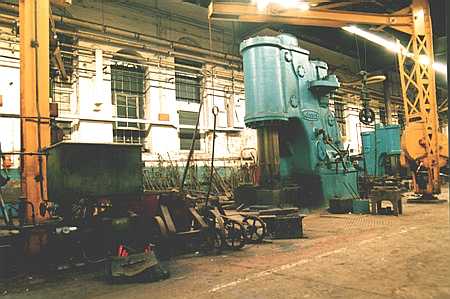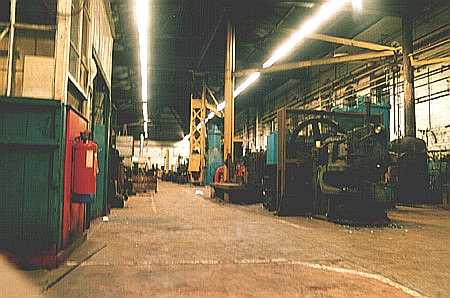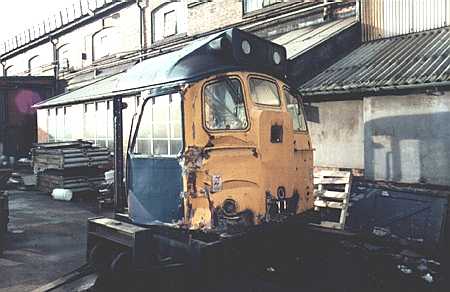

Here is a view of wheel shop (16shop). The machine on the right was used to turn wheels and cut them to the required profile. Odd as it may seem railway vehicle wheels had tyres. These were heated up by placing them in a floor mounted ring which had a number of gas torches fixed to its circumference. Meanwhile the inner part of the wheel was frozen with nitrogen. Then a simple matter of lowering the inner part onto the tyre. Once cooled the two were then virtually inseparable. Behind the wall was 18 shop 9 bay.

Across from the wheel shop/18 shop complex were a row of shops known as the bottom yard, among these was smiths shop where springs and the like were made. The large blue device was a 16 ton hammer which sounded rather like a steam locomotive when it was working. The entire building shook as it struck blows on the workpiece! A smaller version can be seen behind.

Walking to the right of the previous view and looking back down smiths shop in this slightly blurred view, the 16 ton hammer can be picked out between the upright yellow girders. The road from Derby to Pride Park now runs virtually exactly at this point.

The damaged cab from Class 25 No. 25035 is seen outside the cab and boiler repair shop. Note the pile of radiators which were from High Speed Train power cars.